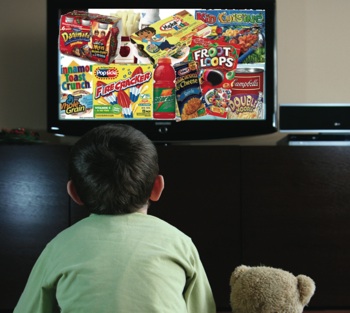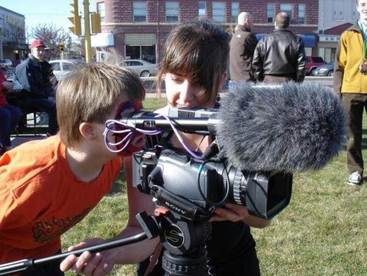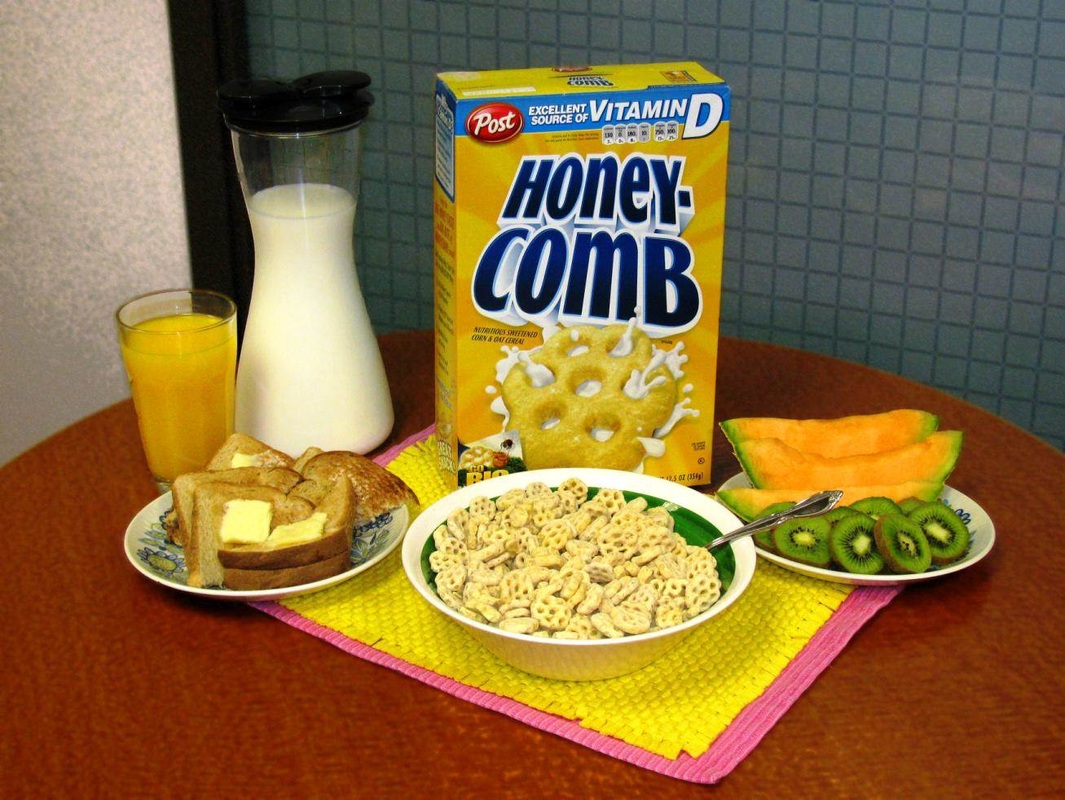“Media Literacy is the ability to access, analyze, evaluate and create media in a variety of forms.”
A continuation from the article on Media Literacy in the Australian Education Times, April 2015. Additional Media Literacy resources are on the 21st Century Schools main web site.

From t-shirts, bumper stickers, enormous digital billboards and logos to the Internet, smart phones, video games and social media the M2 generation was born into a media-saturated society.
Until the 21st century “literacy” was all about reading and writing print text. Today, the messages we receive come to us as images, and sounds, and are increasingly interactive – meaning that the user, or “reader”, is actively engaged with the message.
These interactive messages come in the form of online games as well as through an increasingly wide array of social media. Almost twice as many children have used mobile media compared to two years ago, and the average amount of time children spend using mobile devices has tripled.
The percent of children with access to some type of “smart” mobile device at home (e.g., smartphone, tablet) has jumped from half (52%) to three-quarters (75%) of all children in just two years.[i]
For centuries, education has been designed to make sure students learned facts about the world-- which they proved they knew by correctly answering questions on tests. But such a system is no longer relevant when the most up-to-date facts are available at the touch of a button. What students need today is to learn how to find what they need to know when they need to know it-- and to have the higher order thinking skills to analyze and evaluate whether the information they find is useful for what they want to know.[ii]
Media literacy involves creating messages using technology as well as questioning them. Creating, or producing, a media message is an excellent way to begin developing media literacy, which involves understanding the way messages are constructed.
Until the 21st century “literacy” was all about reading and writing print text. Today, the messages we receive come to us as images, and sounds, and are increasingly interactive – meaning that the user, or “reader”, is actively engaged with the message.
These interactive messages come in the form of online games as well as through an increasingly wide array of social media. Almost twice as many children have used mobile media compared to two years ago, and the average amount of time children spend using mobile devices has tripled.
The percent of children with access to some type of “smart” mobile device at home (e.g., smartphone, tablet) has jumped from half (52%) to three-quarters (75%) of all children in just two years.[i]
For centuries, education has been designed to make sure students learned facts about the world-- which they proved they knew by correctly answering questions on tests. But such a system is no longer relevant when the most up-to-date facts are available at the touch of a button. What students need today is to learn how to find what they need to know when they need to know it-- and to have the higher order thinking skills to analyze and evaluate whether the information they find is useful for what they want to know.[ii]
Media literacy involves creating messages using technology as well as questioning them. Creating, or producing, a media message is an excellent way to begin developing media literacy, which involves understanding the way messages are constructed.
Analyzing and Evaluating Media Messages - an example
|
Buy Me That!
The least healthy cereals are the ones most marketed to children, and overall, children are exposed to a vast amount of marketing for highly-sugared cereals, more than for any other category of packaged food. Some children’s cereal contain up to 37 tablespoons of sugar per box! Think about the product placement and packaging. Notice the image in the header on this page - the little girl reaching for a box of cereal. At what height on the shelving are the products targeting children? Notice the colors. The packaging also frequently features puzzles, games or cartoons on the back of the box. Sometimes the box says, “Look Inside” to claim a prize. |
|
|
|
Celebrities, from Buzz Bee for Honeycombs to SpongeBob, as well as real life celebrities, usually sports figures or musicians, appear frequently on the packages. The latest commercial for Honey Nut Cheerios features Usher, an American singer, songwriter, dancer and actor. In the commercial Usher and Buzz Bee dance to Usher’s latest song, “She Came to Give It to Me”.[iv]
Analyze the commercial. How many connections or techniques are used? Think about sound, movement, body language, color, lighting, celebrity status. |
Part of a Complete Breakfast?
|
Have you ever noticed how the television commercials end with the statement, “Part of a complete breakfast!” accompanied by an image such as this one for Honeycombs cereal.
Let’s analyze this image. What is in the picture? What items in this picture make this a “healthy or complete breakfast”? What is in the image that is not considered to be healthy? Click here to view a variety of television commercials and practice your analysis skills! |
Producing Media Messages
 Students filmmaking at the Yorkton Film Festival.
Students filmmaking at the Yorkton Film Festival.
A deeper way to develop media literacy is to actually construct your own media products. These can range from designing web sites to filmmaking, creating video games, blogging, publishing eBooks and creating products using online tools such as Glogster to make interactive posters.
These projects are not only fun, they help you develop many high level skills such as creativity, critical thinking, collaboration, problem solving and more. “Creativity” and “the ability to ask good questions” are two of the highest skills in demand by corporations.
Creating these products also helps you connect content from the disciplines in a way that is relevant to you, and that is rigorous and real world. When creating these products you are applying your knowledge, not just memorizing it for a test, then forgetting it.
The process of filming, then editing, and inclusion of sound effects, music and voiceovers will help you understand that all media messages are “constructions”. To create a video or film product you begin planning by creating a story board. Going deeper, you will begin to learn various techniques of persuasion as well as various camera angles and lighting.
What media message can you produce? First of all, decide the purpose of your product, and then identify your target audience. Decide what techniques you will incorporate into the production of your message. Most of the activities listed below do not require additional equipment. Most smart phones are able to film and edit your projects. There are also many free online tools for editing and enhancing your messages.
Is it to inform or teach? You can create a “how to” program. For example, you can create a cooking show. An excellent model for students is Alton Brown’s television show, Good Eats. It is entertaining as well as informative. He does not just show you how to create a recipe, he makes connections to everything from agriculture to chemistry, history, sociology, physics, math, anthropology . . . throughout his programs. Popular culture is also frequently incorporated.
Other “how to” program topics could be skateboarding or surfing, gardening, building a car.
Is your purpose to inspire others or to create change? PSAs, or Public Service Announcements, are excellent for getting people to think differently, and as a result, act differently. Perhaps you want people to get more exercise, take better care of the environment, drive safely, or appreciate diversity.
Is your purpose to get viewers, your audience, to take action? Create a commercial to persuade viewers to vote a certain way, on a local bond issue or for a political candidate.
Is your purpose to demonstrate something you have learned? A video product is a powerful and creative way to demonstrate your knowledge and skills. It could become a significant item in your student portfolio. It could be a product you have created as an end-of-course assessment for credit. Perhaps you would like to create a mini-documentary such as those featured on the Biography, History, National Geographic or Discovery channels.
Is the purpose to entertain? Sometimes we just want to watch a program for entertainment. We like to hear good stories; they can be humorous, musicals, dramas . . . Some schools have programs or courses which span an entire semester, or even an entire school year, during which time the students have actually created a feature length film!
Is the purpose to create income? You may have a product or service for which you create a commercial.
We have just barely begun to scratch the surface of how you can develop your media literacy skills. But these suggestions will give you a great start! I would love to hear from you; what kind of project do you want to do?
Email me at [email protected] to request more information or to share your media products with us. Maybe we will publish them in our newsletter!
These projects are not only fun, they help you develop many high level skills such as creativity, critical thinking, collaboration, problem solving and more. “Creativity” and “the ability to ask good questions” are two of the highest skills in demand by corporations.
Creating these products also helps you connect content from the disciplines in a way that is relevant to you, and that is rigorous and real world. When creating these products you are applying your knowledge, not just memorizing it for a test, then forgetting it.
The process of filming, then editing, and inclusion of sound effects, music and voiceovers will help you understand that all media messages are “constructions”. To create a video or film product you begin planning by creating a story board. Going deeper, you will begin to learn various techniques of persuasion as well as various camera angles and lighting.
What media message can you produce? First of all, decide the purpose of your product, and then identify your target audience. Decide what techniques you will incorporate into the production of your message. Most of the activities listed below do not require additional equipment. Most smart phones are able to film and edit your projects. There are also many free online tools for editing and enhancing your messages.
Is it to inform or teach? You can create a “how to” program. For example, you can create a cooking show. An excellent model for students is Alton Brown’s television show, Good Eats. It is entertaining as well as informative. He does not just show you how to create a recipe, he makes connections to everything from agriculture to chemistry, history, sociology, physics, math, anthropology . . . throughout his programs. Popular culture is also frequently incorporated.
Other “how to” program topics could be skateboarding or surfing, gardening, building a car.
Is your purpose to inspire others or to create change? PSAs, or Public Service Announcements, are excellent for getting people to think differently, and as a result, act differently. Perhaps you want people to get more exercise, take better care of the environment, drive safely, or appreciate diversity.
Is your purpose to get viewers, your audience, to take action? Create a commercial to persuade viewers to vote a certain way, on a local bond issue or for a political candidate.
Is your purpose to demonstrate something you have learned? A video product is a powerful and creative way to demonstrate your knowledge and skills. It could become a significant item in your student portfolio. It could be a product you have created as an end-of-course assessment for credit. Perhaps you would like to create a mini-documentary such as those featured on the Biography, History, National Geographic or Discovery channels.
Is the purpose to entertain? Sometimes we just want to watch a program for entertainment. We like to hear good stories; they can be humorous, musicals, dramas . . . Some schools have programs or courses which span an entire semester, or even an entire school year, during which time the students have actually created a feature length film!
Is the purpose to create income? You may have a product or service for which you create a commercial.
We have just barely begun to scratch the surface of how you can develop your media literacy skills. But these suggestions will give you a great start! I would love to hear from you; what kind of project do you want to do?
Email me at [email protected] to request more information or to share your media products with us. Maybe we will publish them in our newsletter!
Digging Deeper for Breakfast!
The Breakfast Battle: Consumers May Not Be Making Smart Choices After All
Study: Least Healthy Cereals Most Marketed to Children
Cereal FACTS
The Breakfast Battle: Consumers May Not Be Making Smart Choices After All
Study: Least Healthy Cereals Most Marketed to Children
Cereal FACTS
[i] Zero to Eight, Children’s Media Use in America, 2013, Common Sense Media Research Study, 2013. [Statistics are similar for media use in Australia.]
[ii] Center for Media Literacy, “Literacy for the 21st Century: the Hope and the Promise”
[iii] Image of Usher and Buzz Bee for Honey Nut Cheerios commercial, Creative Commons License
[iv] Usher, “She Came to Give It To Me.”, 2014
[v] Image of students filmmaking is from the Yorkton Film Festival page on Flickr.

